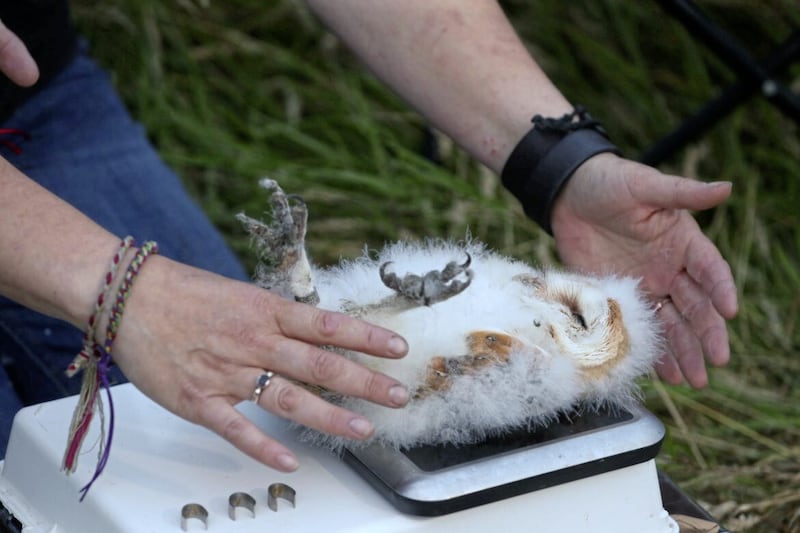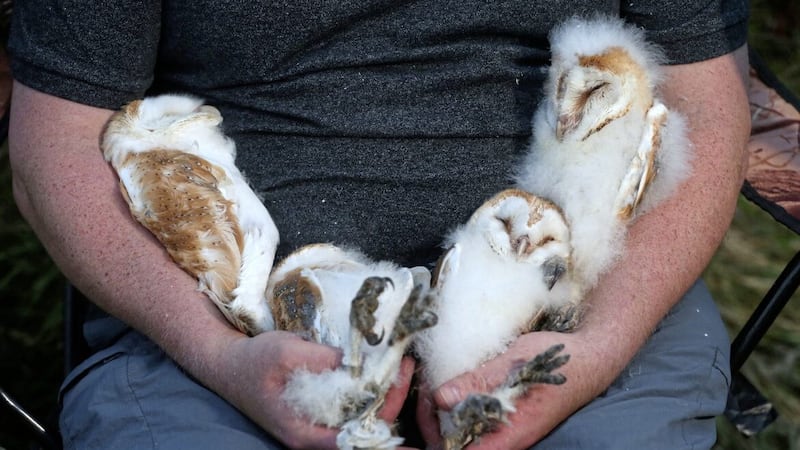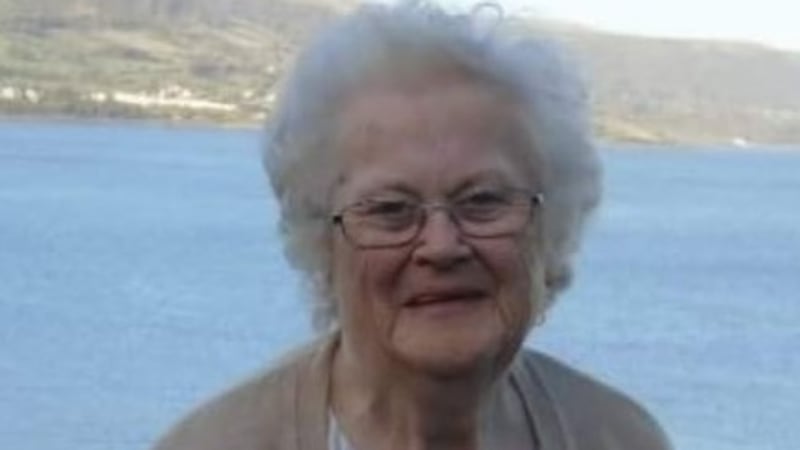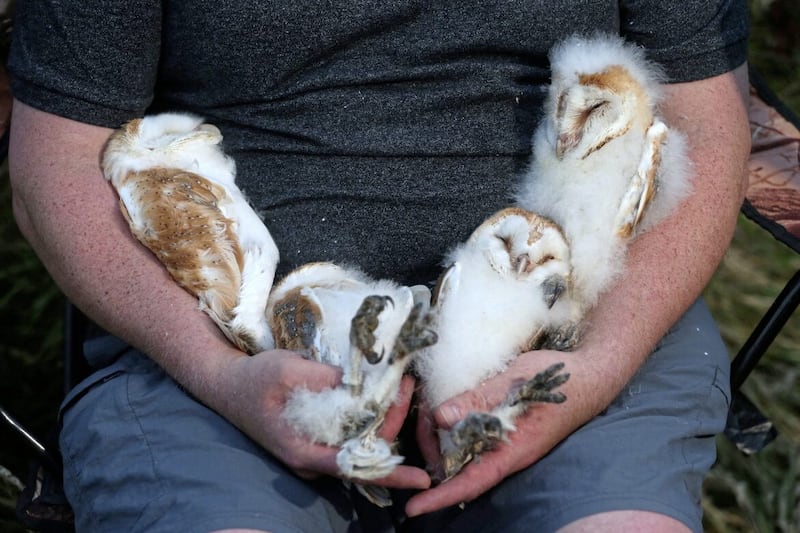A BROOD of four barn owlets have been born on farmland in Co Antrim, eight years after volunteers put up nesting boxes in an old barn.
Barn owls are an at-risk species in Northern Ireland with fewer than 50 breeding pairs.
But thanks to the work of a group of volunteers, numbers in some sites are increasing.
The owlets were born to a breeding pair who have made their home in an old barn outside Crumlin.
Volunteer Ciarán Walsh said six owlets were born but two of them did not survive.
"Those four will start to fledge in the next three weeks," he said.
"The owls are all aged differently because the eggs don't all hatch at the same time. The oldest will leave in about three weeks and then another one will go a few days after that.
"Once they go they'll never return to the nest."
Barn owls have an average lifespan of five years, Mr Walsh said.
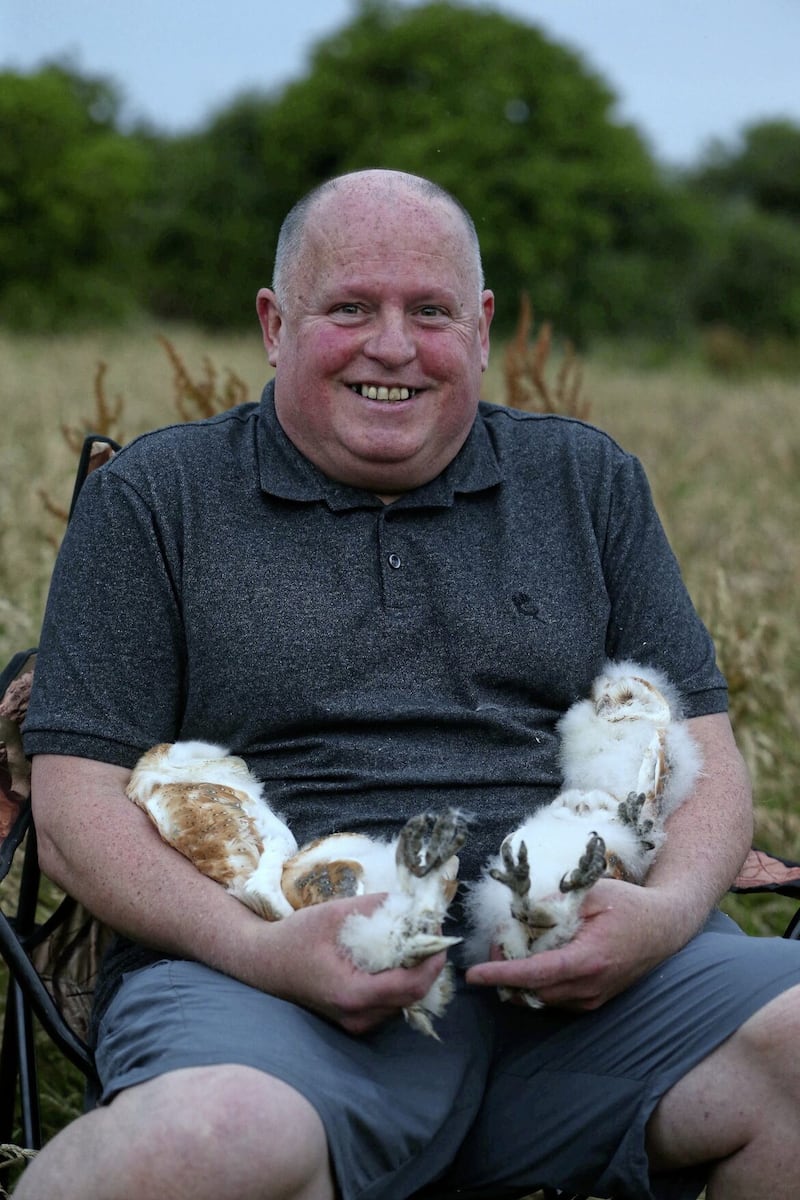
Mr Walsh and three friends - Paul Toner; Noel McKernan and Peter Crossett - have worked to try and increase barn owl numbers for years.
"Myself and three friends go out and find sites that we think would be suitable for barn owls," he said.
"We then approach the farmer or the landowner and ask if we can put up boxes in trees or barns.
"This box was in an old stone barn.
"Eight years ago I put boxes up in the barn. The birds visited frequently but didn't stay and breed. This is the first successful year that they have bred."
Mr Walsh said the ringed male was from a brood of five chicks born several years ago.
However, the female was not ringed and is from a nesting site not known to volunteers.
"They are so secretive," he said.
"People think they're easy to spot because they're white, but they're not. At night, one could be flying past you at 30 or 20 feet away and you wouldn't see it. They really are elusive."
The young birds were officially ringed under licence on Monday night.
"They're brilliant to ring because when you put a barn owl on its back it basically goes to sleep," he said.
"If they're upright and you come towards them they'll lash out at you."
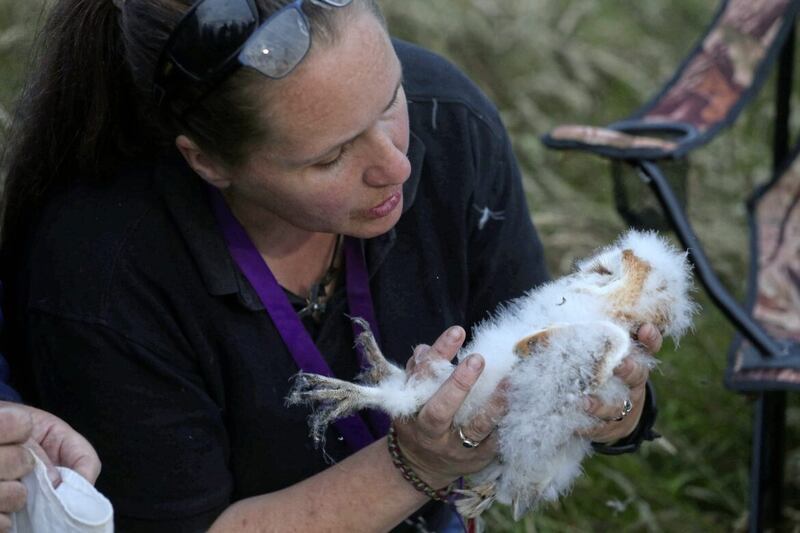
Mr Walsh said decades of intensive farming and the use of rat poison on farms had caused barn owl numbers to drop.
But those numbers are slowly increasing.
He estimated that, over the last five years, 30 owlets have been born in nesting sites monitored by the group of volunteers.
Mr Walsh puts up seed feeders around some of the nest boxes to encourage the field mice that barn owls feed on.
"We put up the nest boxes because a lot of old barns have been converted and they need somewhere to nest in," he said.
"Once the owls find the boxes they start to use them."
Mr Walsh has been involved in conservation since he was a young child.
"I grew up on the Falls Road in the 1970s so the Bog Meadows and Black Mountain were an escape from all the madness," he said.
"I had an older brother who was deeply into conservation. We would go off and look at nature and he would tell me what was what.
"On the Bog Meadows up until the mid-eighties there used to be a pair of barn owls in the heart of west Belfast. I was always amazed by them."
